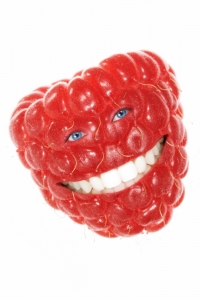
All throughout evolution, animals that were able to modify their teeth according to the present food available in their area are the ones who are most likely to survive.For us humans, our teethnot only help us eat properly, but they also help us communicate and support our facial structure and the bones surrounding our mouth. Without our teeth, we’d probably starve and skulls would be more vulnerable to concussions and physical stress.To be able to do its job properly, they would have to be hard enough to withstand the friction between one another and the biting force of our jaws. And this is possible because of enamel.
Enamel is the tough outer covering of our teeth. It is considered as the hardest substance in the human body. However, no matter how hard it is, we may still experience a cracked tooth every once in a while. This may be caused by different factors and may occur both internally and externally. Although rare, internal problems that cause tooth breakage show little or no symptoms and can be hard to identify until they begin to show significant damage and effect. For external causes, the damage is more apparent and the condition can quickly turn severe. This type of crack may either include a minor section of the tooth or a huge part of it.
Cracked teeth may be caused by different situations. Getting hit, biting on something hard and other accidents leading to trauma may all cause breakage.Other underlying causes of having cracked teeth may involve disorders like bruxism or “teeth grinding”that most of us do unconsciously during sleep. A bad dental job or poor hygiene may also cause tooth cracks because of poor alignment and decay.
Treatment of breakage all depend on the severity of the problem. Since they are difficult to see, internal cracks are often left untreated until obvious signs appear. For external cracks, minor damage may involve simple tooth filling especially for areas that aren’t too obvious and seen by other people. Other dental professionals make use of crowns or caps, bonding and veneers for more serious damage and larger breaks. Check out http://www.dentalben.com.au/ for more options.
In some cases, large cracks can lead to extreme pain because the underlying dentin is exposed. Since the dentin has very small holes, it exposes the highly sensitive nerves and other softer parts of the teeth to foreign objects and external elements. If left untreated, the exposed tooth or teeth may cause more pain and eventually end up in infection. To treat this, dentists use root canal therapy. This procedure includes the removal of all pulpy tissues within the tooth. Once it has been removed, the area is cleaned and then covered with a cap or crown.
Enamel is the tough outer covering of our teeth. It is considered as the hardest substance in the human body. However, no matter how hard it is, we may still experience a cracked tooth every once in a while. This may be caused by different factors and may occur both internally and externally. Although rare, internal problems that cause tooth breakage show little or no symptoms and can be hard to identify until they begin to show significant damage and effect. For external causes, the damage is more apparent and the condition can quickly turn severe. This type of crack may either include a minor section of the tooth or a huge part of it.
Cracked teeth may be caused by different situations. Getting hit, biting on something hard and other accidents leading to trauma may all cause breakage.Other underlying causes of having cracked teeth may involve disorders like bruxism or “teeth grinding”that most of us do unconsciously during sleep. A bad dental job or poor hygiene may also cause tooth cracks because of poor alignment and decay.
Treatment of breakage all depend on the severity of the problem. Since they are difficult to see, internal cracks are often left untreated until obvious signs appear. For external cracks, minor damage may involve simple tooth filling especially for areas that aren’t too obvious and seen by other people. Other dental professionals make use of crowns or caps, bonding and veneers for more serious damage and larger breaks. Check out http://www.dentalben.com.au/ for more options.
In some cases, large cracks can lead to extreme pain because the underlying dentin is exposed. Since the dentin has very small holes, it exposes the highly sensitive nerves and other softer parts of the teeth to foreign objects and external elements. If left untreated, the exposed tooth or teeth may cause more pain and eventually end up in infection. To treat this, dentists use root canal therapy. This procedure includes the removal of all pulpy tissues within the tooth. Once it has been removed, the area is cleaned and then covered with a cap or crown.
 RSS Feed
RSS Feed